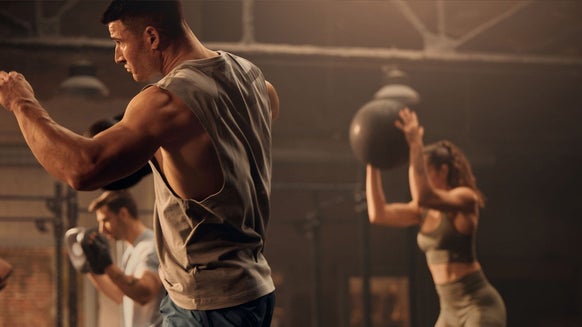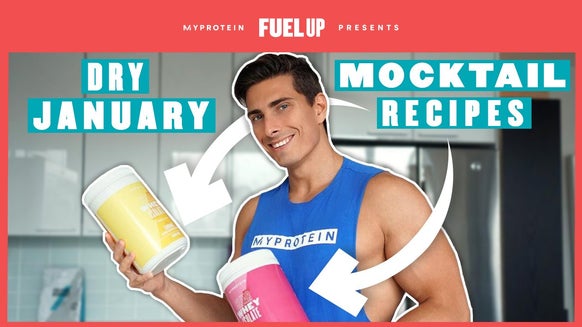Short Workouts | From 4-Seconds to 20-minutes, there’s always time for a quick workout
If you’re finding yourself trying to find time to improve your fitness, or you’re struggling to fit your usual workouts into a busy schedule, then you might benefit from the advantages of our quick workouts. Our guide to brief workouts will get the blood pumping and see you experience improvements in your fitness even when you struggle to find the time for longer sessions.
Short workouts less than 10 minutes long:
The ultimate time-saver is 4-second fitness, which can assist in fat loss by increasing your daily energy expenditure.
HIIT style workouts can help to boost your metabolism and increase energy expenditure for fat loss and can be effective in bouts of less than 10 minutes!
If you find that you have a little bit more time available, then you can fit a solid session into just 10 or 20 minutes, following a similar HIIT workout style described in this article.
What is 4-Second Fitness?
vegan smoothie_1603991578
This type of workout is intended to be done 5 times per hour, every hour for 8 hours throughout the day. Researchers have previously found that this facilitates higher rates of fat oxidisation than in individual who remain sedentary, so this could be the perfect solution to a busy schedule where it seems impossible to fit longer sessions in!
Duration: 4 seconds Rest: 45 seconds Repetitions: 5 Sets: 8
3-Minute Fitness with 5 Planks
When performed correctly, the plank is a great exercise to challenge the muscles surrounding your spine (or your ‘core’). This is good for developing isometric (no movement) strength, which is ideal for anybody whether you’re a powerlifter who needs to brace their spine isometrically in preparation of lifting heavy weights, or whether you’re the average gym-goer who wants to improve their general strength and mobility.
Duration: 30 Seconds Rest: 30 Seconds Repetitions: As many planks as possible within 30 seconds. Sets: Either complete 5 sets of one form of plank, or one set of each of the 5 plank variations.
4-Minute Tabata Workout
If you're looking for a new program to add to your routine, you may want to give Tabata try. Tabata training is a high-intensity interval training (HIIT) workout, super effective for incinerating fat in four-minute intervals.
Duration: 20 seconds per exercise Rest: 10 seconds per exercise Repetitions: As many as possible within 20 seconds. Sets: 1 set of 8 individual exercises.
10-Minute Workouts
If you find yourself with 10-minutes to spare, or a brief period where you’re free, then consider a 10-minute HIIT workout.
HIIT, or High-intensity interval training, is a method of exercise that involves bouts of intense exercise with minimal rest, stimulating a high metabolic response from your body and burning lots of calories.
Some good advice would be to make sure that you are properly hydrated prior to doing a HIIT session, and also maybe consume some simple carbohydrates if you have not eaten for a while (you don’t want to be fainting during your session!).
Treadmill HIIT Workout
Often, the ‘intensity’ part is lost or neglected – so it’s important to remember that for this method of exercise, you need to be going all out on the prescribed exercises to get the maximum benefit (and be psychologically prepared for a challenging and tiring session!).
Duration: 10 Minutes Rest: Cool down at a jog or walk pace for 5 minutes Equipment: Treadmill
Sam's 10-Minute AMRAP | Work Out From Home
Don’t think you can get an effective workout in 10-minutes? Well, you clearly haven’t tried this 10-Minute AMRAP! 10-minutes might sound easy, but you’ll find out quickly that you’re in for a challenge.
Duration: 10 Minutes Repetitions: 20 Dumbbell Snatches and 10 Dumbbell Facing Burpees Sets: AMRAP (As Many Rounds As Possible until failure) Equipment: A dumbbell, and a mat (optional)
15- Minute Workouts
A short workout like this would be ideal to fit in after waking up and before work, on your lunch break or during a quick session at the end of the day.
HIIT training has a whole host of benefits. It burns a lot of calories in a short space of time making 15-minutes of HIIT more effective than 45 minutes steady-state cardio. The metabolic demands of this workout mean your muscles will be consuming more energy throughout the day as they are repairing – thus increasing your total daily energy expenditure.
HIIT Workout at Home
This 15-minute HIIT workout is a great way to get the heart pumping and the calories burned, all from the comfort of your own home. Your exercises will be in sets of 3 where you do 20 seconds on 10 seconds rest.
Duration: 20 seconds per exercise Rest: 10 seconds between each exercise Repetitions: As many as possible within 20 seconds Sets: 3
Abs Workout
This quick 15-minute workout is perfect for an abs blast to develop your core muscle strength and endurance. Include a brief 2-minute warm-up before you start so that the blood is pumping and your temperature has increased. A brief cool down including some static or dynamic stretching, paired with remaining active throughout the day will assist in optimal recovery.
Duration: 40 seconds per exercise Rest: 20 seconds following each exercise Repetitions: As many as possible within the 40 seconds Sets: 1 set of each exercise
20-Minute Workouts
In 20 minutes, you can get a great workout in if you’re motivated and willing to push on through a challenging session. In this time frame, you’ll be looking to minimise rest times in order to maximise the time-efficiency of your workout.
You can effectively train muscular endurance and power during this short time-frame, so expect to feel DOMS after your intense session. This is also a great way to stimulate a metabolic response demanding the use of calories as fuel, so you can count on this for weight loss when combined with an appropriate nutrition plan.
20-Minute HIIT Workout
Our Work Out From Home series is here to help you stay on track with your fitness goals even when the gym isn’t an option. Whether you’re completely new to this or no stranger to a heart-hammering session, these workouts are perfect for all levels of ability.
Duration: 50 seconds per exercise Rest: 10 seconds
Lose Weight and Tone-Up with this Whole-Body HIIT Workout
Don’t have a gym membership? Try this 20-minute High-Intensity Interval Training (HIIT) program for getting fitter and feeling great.
Duration: 40 seconds per exercise Rest: 20 seconds Repetitions: As many as possible within 40 seconds Sets: 2 (This 20-minute HIIT workout consists of two circuits, each made up of 5 exercises)
How To Find The Time For Short Workouts
If you’re short on time, then you can fit a 10-20 minute intense workout in after you wake up and before you leave for work. Make sure to leave enough time to still get ready properly, as you probably don’t want to turn up to work all hot and flustered. Alternatively, if you have an hour lunch break then you could fit a quick session in there, or even after work, as a short session requires much less mental energy (and time commitment) than longer intense sessions.
Top Tips To Keep You Workout-Motivated
Tip 1 | Get Your Gear Ready Before You Go To Sleep
Preparing your clothes and equipment ready for when you wake up will help keep you on track when you wake up. That way, all you have to do is grab it and go instead of wasting time looking for your gear whilst half awake.
Tip 2 | Have a Plan
Sessions are far more likely to be engaging and effective if they have been planned and have a set structure to them. This helps the session to be more autonomous as you go through it, not having to think about what you want to do next. This can also be a good way of inserting exercises that you may not necessarily enjoy as much as others, but know that you should do for the benefits that can be gained from them.
Tip 3 | Set Up Your Own Motivational Workout Playlist
Or use one of ours.
An ergogenic aid is anything that an individual can use to enhance their performance, including music. If you’re looking to optimise your workout, then you need to invest the time in creating a good playlist – headphones can help block out ambient sounds in the gym and help to keep you focused and motivated for the task at hand.
Short Workouts - Your Questions Answered
1. Are Short Workouts Effective?
The effectiveness of short workouts is reliant on intensity and frequency. It also depends on what kind of adaptations you are looking for – if you’re looking to gain strength or cardiovascular endurance, then a longer session may be of value to you.
If you’re seeking increases in muscular power, size or fat loss, then short and intense workouts can be effective in helping you achieve these goals when exercises are done correctly with an appropriate structure to the session. Remember, a short workout is always better than none at all!
2. Are 10 minutes of exercise per day enough?
The NHS state that individuals should reach 150 minutes of moderate physical activity per day, or 75 minutes of vigorous activity per week. One bout of intense physical activity for 10 minutes every day would be nearly enough to reach this quota, and of course, would be more effective for your fitness and general health instead of doing no activity whatsoever.
When combined with an active lifestyle (i.e. lots of walking at work or commuting etc.), adequate sleep and proper nutrition, 10 minutes of vigorous exercise per day are ideal for time-constrained individuals.
3. Can you lose weight with 15 minutes of exercise a day?
In short; Yes. Weight loss is facilitated by a caloric deficit (consuming fewer calories than you use in a day), so while 15 minutes of intense activity is definitely enough to induce a metabolic response demanding more calories to the muscles as fuel from the body, an appropriate diet would be a strong starting point for weight loss.
4. For how long should you hold a plank?
The goal of this exercise is to fatigue your ‘core’ muscles (namely, the rectus abdominus – or ‘six pack’). If you find that you can hold a plank for more than around 60 seconds without feeling much difficulty, then chances are you need to address your technique in the exercise.
To increase the difficulty of the exercise, squeeze your glutes together, contract your abs and shift your base of support by moving your elbows in-line with your eyes instead of stacked under your shoulder. This should enable you to reach the feeling of muscle fatigue in a reasonable 30-90 seconds (or you can try for the world record, which currently stands at over 8 hours!).
5. Can you get DOMS after a short workout? How can I combat this?
DOMS (or Delayed Onset of Muscle Soreness) often occurs after bouts of exercise that involve exercises that you are unfamiliar with or cause you to work hard (i.e. heavy load, lots of repetitive activity over a long period of time or lots of intense activity in a short time period). If your short workout includes jumping, that you may not normally do, then expect DOMS in your hip flexors and the muscles throughout your legs (i.e. hamstrings, quadriceps, calves).
To combat the discomfort of DOMS, academic research suggests you should in fact move more instead of remaining sedentary due to the soreness. More exercise or simply moving (like walking) can maintain increased blood flow around your body, helping to remove waste products from muscle cells, whilst supplying them with the nutrients required to rebuild the damaged muscle fibres.
Remaining active with DOMS has also shown to reduce the perception of discomfort and pain.
6. Is it better to train longer or harder?
It depends. The end goal or desired adaptations should dictate your training. If you’re training to run a marathon, then it’s probably better to put in the miles at a steady and sustainable pace. If you’re simply short on time and looking to fit some sort of exercise into your day, then more intense shorter bouts of exercise may be best for you in order to maintain or enhance fitness levels and support weight loss with your diet.







